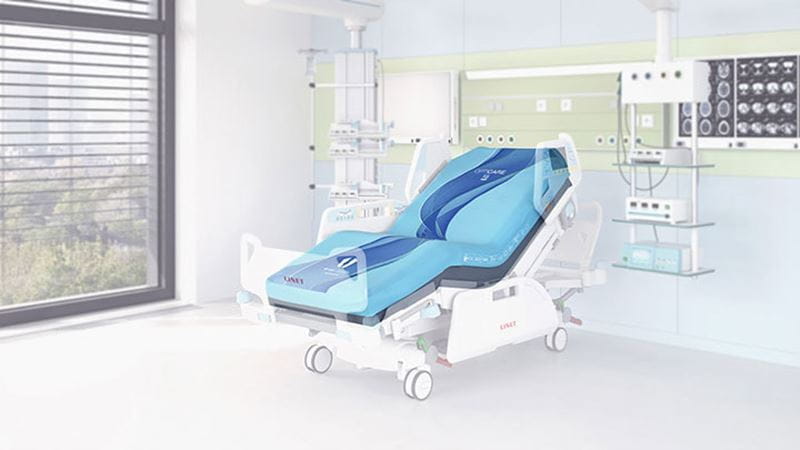Material Benefits

A comprehensive research report on pressure injuries concluded that globally 12.8% of hospitalized adult patients suffered pressure injuries or ulcers.* Not just unpleasant, in some cases these can be fatal. According to research in the Journal of the American Medical Association, more than 60,000 people in the United States die each year as a result of infections from pressure injuries.
This is not something you would expect to happen in a place we would see as being safe and restful.
“Pressure ulcers are a massive issue globally,” says Richard Haxby, Technical Director for Trelleborg’s engineered fabrics used for medical surfaces, such as mattresses, hospital chairs and wheelchairs.
“In a typical hospital environment, over one-in-ten people who are in hospital for a significant length of time will end up with pressure injuries. That means a huge cost to health authorities because when someone has pressure ulcers they will be in hospital for much longer than if they had avoided developing them,” says Haxby.
It is better to address the cause and not the symptoms of these silent killers. However, many hospitals and healthcare authorities continue to spend much more on the symptoms — 17 times more than on the causes, according to an industry advisory panel.
“Money goes into the time involved nursing someone with a pressure ulcer, rather than investment upfront in the right support materials and bedding to avoid patients developing pressure ulcers in the first place,” explains Haxby.
Since the 1990s, polyurethane has replaced vinyl PVC or rubber-coated fabrics for support surfaces because of its unique properties, such as stretchability and water resistance. However, it has been a challenge to achieve the required balance in a fabric to effectively combat pressure ulcers; a permeable, breathable material that is also tough enough to withstand repeated cleaning with the range of disinfectants that ensure patient hygiene and safety.
Trelleborg has long been at the forefront of developing high-performance materials for the healthcare industry. Its Dartex MicroClimate fabrics, which are up to ten times more breathable than a standard polyurethane coating, are market leading. Two years in development, the company’s next generation medical fabric is Dartex MicroClimate EcoPlus.
“Historically, polyurethane coatings only provided breathability or chemical resistance to support surface fabrics, not both,” explains Sophie Routledge, a Process Engineer who was development project manager on the Dartex MicroClimate EcoPlus project.
“The new polymer coating provides high performance for both of these characteristics. It’s something ground-breaking for the industry that nobody else offers.”
Routledge describes a rigorous testing process, starting with lab-scale trials using small fabric samples with the MicroClimate Plus coating to discover how the team could process the polymer coating and the fabric. From there, a larger scale trial took place, where Trelleborg’s operators mixed the polymer coating and ran it down a 100-meter-long engineered fabric production line. Finally, the team performed its standard quality tests on fabric coated with MicroClimate Plus to establish chemical resistance and moisture vapor permeability, as well as peel bond, tear and tensile strengths.
The clue to the other significant feature of the resulting engineered fabric, Dartex MicroClimate EcoPlus, lies in its name. It is made of 100 percent recycled fabric.
“At Trelleborg we’re working with suppliers to find sustainable, recycled fabrics to offer to the industry. It’s a big drive within the industry and from within Trelleborg. The Group has ambitious sustainability targets and this one way to help to meet these,” says Routledge.
Richard Haxby picks up the story: “When you make a polyester yarn from virgin polyester, you start with the plastic, and then you extrude a fiber. Multiple fibers make up the yarns. When you make recycled polyester yarn, you take material made from plastic bottles or post-consumer fabrics, shred them, and then feed them into an extruder to produce a recycled fiber.”